It is the most glorious time of the year in Melbourne (Australia). Our garden is yielding its scrumptious early bounty of red-coloured treats. Delectable alpine strawberries, loganberries, raspberries, mulberries and early cherries – all in mid-November!
Over the past three years the alpine strawberries (Fragaria vesca) have colonised under our fruit trees, growing over a mulch of pine needles. We can hardly eat them as fast as they ripen. These tiny strawberries taste quite different to the larger varieties, with a rich strawberry-ish, almost bubble-gum like flavour. It is like having a sweet shop in the garden.
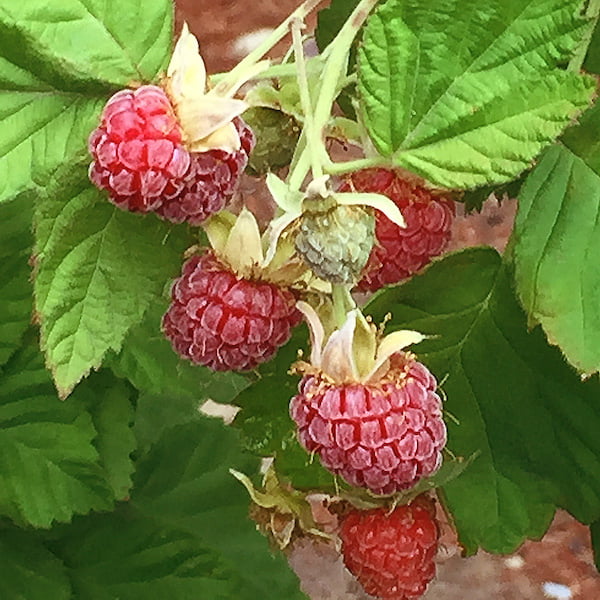
Early berries
The raspberries (Rubus idaeus) and loganberries (Rubus x laganobaccus) are early this year and happily plump, possibly due to good winter rains. Interestingly, the loganberries were not pruned last winter and have fruited extraordinarily well; and the raspberries that were pruned to remove the old canes, have also fruited very well. I’m not sure how to explain that both approaches (to prune or not to prune – that is the question) seem to have been equally successful this year.
The small weeping mulberry tree (Morus nigra) has produced tiny, dark baby mulberries with a rich, earthy flavour. A second, much larger mulberry tree nearby is only now forming its fruit which are still hard and green, and will not be ready until Christmas. Those of you who enjoy mulberries will know that the mulberry has a flavour unlike any other berry, and red-stained fingers and dribbles are part and parcel of the experience. The rich red pulp and juice can be used to colour preserves (white-flesh peach and mulberry jam is delicious) and added to baking (think muffins, cakes, mousse and sauces) for a dash of red pizazz. I am yet to experiment with making a mulberry ‘paste’ but imagine it would be as equally delicious as quince paste, and pair beautifully with a smelly, ripe cheese.
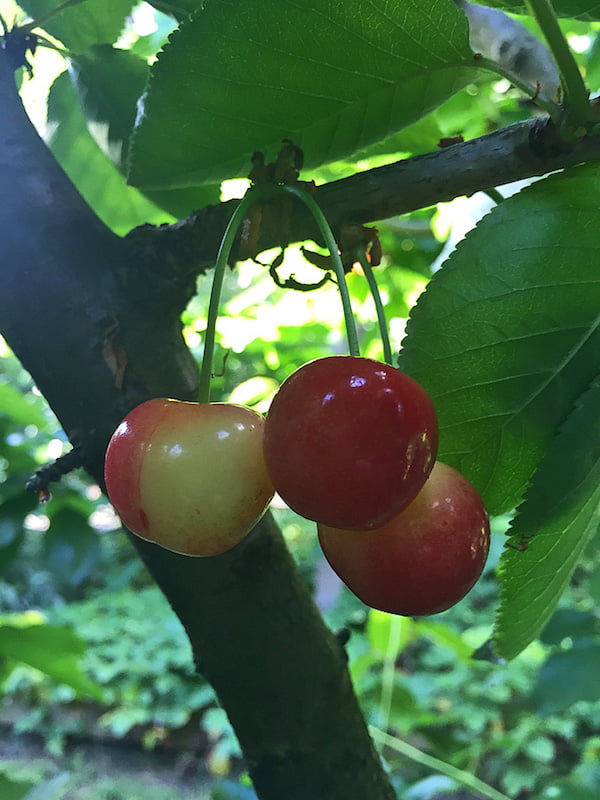
Ripening cherries
The cherries (Prunus avium ‘Royal Rainier’ and ‘Starkrimson’), although only half red, are already delicious to eat, and will continue to sweeten. I always think of cherries as a risky crop because they can be ruined within a few days by either too much rain (splitting the cherries), not enough rain (shrivel and drop), marauding wildlife (possums and birds) or even stealthy neighbours! However, I think they are most definitely worth the effort because in a good year, standing next to a cherry tree and nonchalantly munching away while the sun filters through the leaves, is a true delight.
Although we have many birds in the garden – ranging from smaller scrub wrens to larger birds, they have not yet decided to help themselves to the berry and cherry bounty. I’m not sure why – perhaps because the garden is lush with spring growth and there are plenty of other dining options. Certainly the visiting family of gang-gang cockatoos have been enjoying the yellow berries of the White Cedar (Melia azedarach). Their tell-tale squeaky door talking seems to get increasingly raucous the more berries they consume.
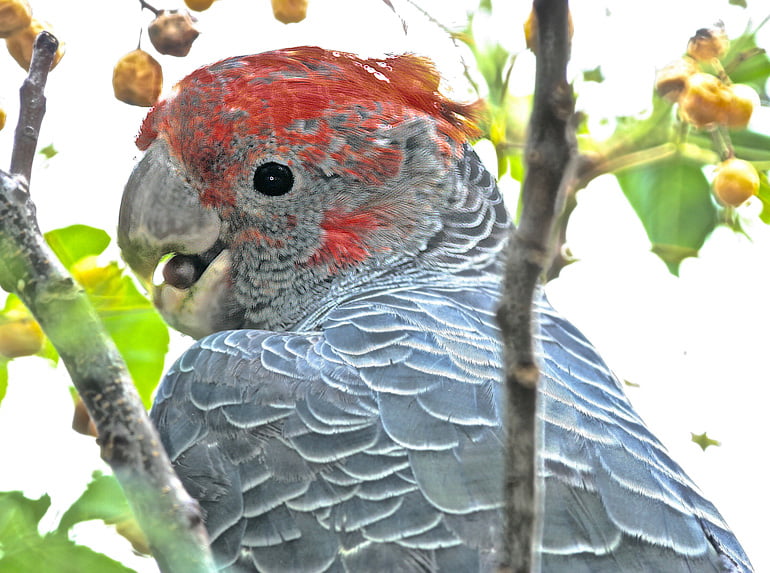
Gang-gang cockatoos feasting on yellow Melia berries
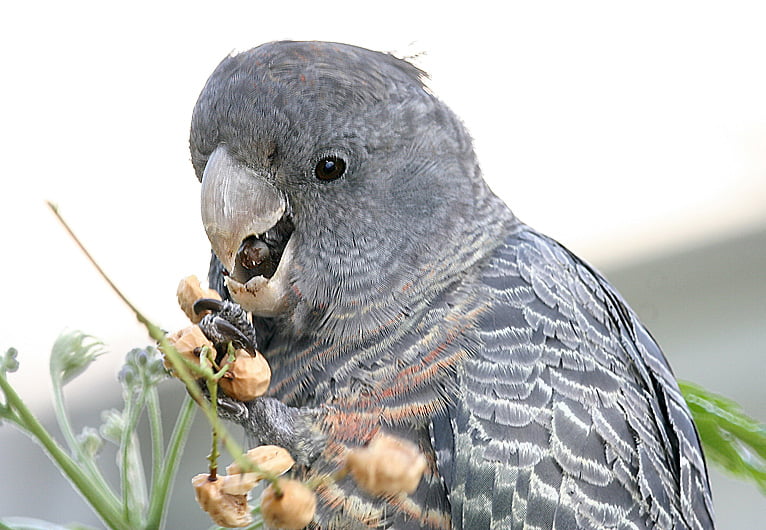 When walking around the garden it is impossible not to pick a handful of red delights and munch away. Forget garden to plate – garden to mouth is even better! However, when these red fruits of November actually make it to the kitchen they are perfect for a mouth-watering desert. Combined with low-fat passionfruit yoghurt and placed in a meringue nest, what more could you wish for?
When walking around the garden it is impossible not to pick a handful of red delights and munch away. Forget garden to plate – garden to mouth is even better! However, when these red fruits of November actually make it to the kitchen they are perfect for a mouth-watering desert. Combined with low-fat passionfruit yoghurt and placed in a meringue nest, what more could you wish for?
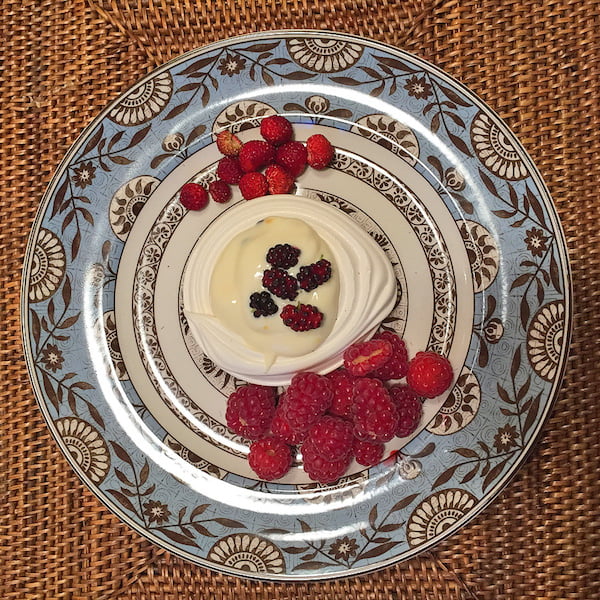
Red November dessert
Definitely one of the best times of the year in a Melbourne garden – if only November could last for a few more months!
